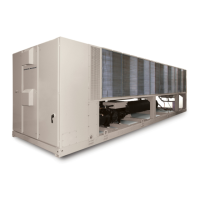Why is Daikin McQuay Chiller compressor overload tripped or circuit breaker tripping?
- CChristopher RobbinsAug 18, 2025
If the Daikin McQuay Chiller compressor overload is tripped, the circuit breaker trips, or fuses are blown, it could be due to several reasons: * Low voltage during high load condition. Check the supply voltage for excessive voltage drop. * Loose power wiring. Check and tighten all connections. * A power line fault causing unbalanced voltage. Check the supply voltage. * Defective or grounded wiring in the motor. Check the motor and replace it if defective. * High discharge pressure. Refer to corrective steps for high discharge pressure.


